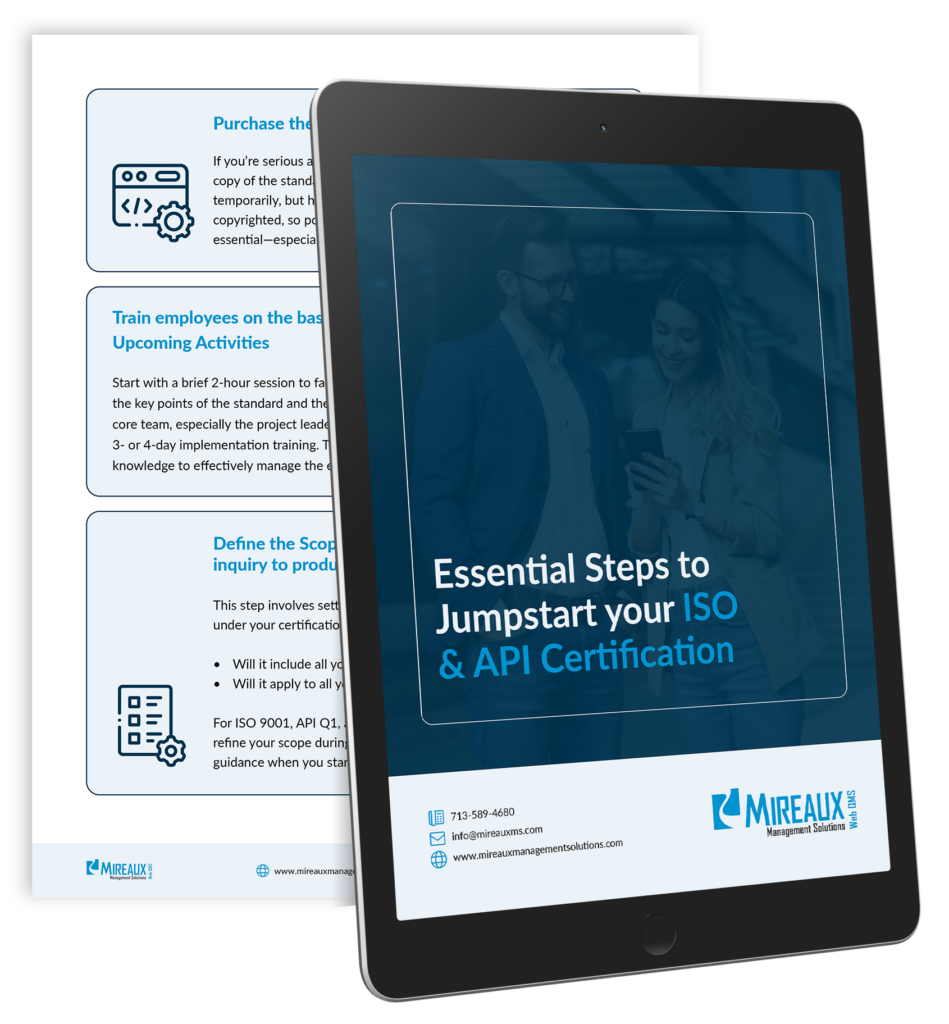The ISO 9001 standard’s requirements in regards to suppliers are very short and concise but carry a lot of punch. This requirement can be very deceiving and in fact is very often misinterpreted and carried out poorly or partially. By implementing this clause correctly, an organization will get the full extent of the benefits sought out by the standard. We are going to explain here the intent of the standard in regards to suppliers and the best way to accomplish it.
What the standard wants
The ISO 9001:2008 standard requires that supplier be evaluated, selected and reevaluated. Specific requirements related to the supplier’s evaluation are in 2 places:
- Section 7.4 Purchasing, the second paragraph requires the organization to evaluate and select suppliers based on their ability to supply product in accordance to the organization’s requirements. It adds that criteria for selection, evaluation and reevaluation of suppliers be established and that records of results and actions be maintained.
- Section 8.4 Analysis of data, bullet d, requires the organization to determine, collect and analyze appropriate data regarding suppliers to demonstrate the suitability and effectiveness of the QMS and to evaluate where continual improvement can be made.
What suppliers are affected by the requirements?
There are two definitions to consider before we start discussing further the intent of the standard in regards to suppliers. One is defining which suppliers are affected by the requirements of the standard, and the other one, defining the difference between vendors and suppliers.
The suppliers that are affected by the standard are those suppliers that affect product or service conformance; or the quality of your products or services. So we are not talking about suppliers that provide products or services that do not affect the quality of your product or the quality of your services. Here are a few examples:
- Plastics: your suppliers will be those companies that provide the raw materials for you, such as PVC, resin, color pigment, calibration services, etc.
- Chemicals: your suppliers could be oxygen, nitrogen, stabilizers, water, calibration services, railroad, warehouses, etc.
- Banking Services: Your suppliers could be security personnel, transport trucks, internet service providers, larger banks, etc.
In the first case of plastics, the absence of one of your primary raw materials would significantly affect the quality of your product; in fact, you may not be able to provide the product at all. Similarly in the case of chemicals, the absence of water for example, would be considered a critical problem if your product requires cooling or heating provided by water. In essence, the absence of these suppliers will make it harder for you to provide the same quality product or service as required by the customer.
These few examples also illustrate that we are not talking about suppliers of coffee, food, office supplies, air conditioning, etc. Those would be considered products or services that would not affect directly the quality of your products or services. For example in the absence of coffee or office supplies, could your products be still manufactured? In the absence of air conditioning, could you still provide your services? Of course it could be argue that coffee does help indirectly improve employee’s performance in the morning. It could also be argue that air conditioning helps employees feel more comfortably while at work. To a certain extent, this could be true, however unless your product or service requires a controlled environment, it will up to you to consider your air conditioning repair company in the supplier program. Essentially these types of suppliers affect your products or services indirectly and need not be included in your supplier quality program.
The second definition to remember here is there is no difference between vendor and supplier. Some companies use the “vendor” word such as in “vendor approved list”. Other companies call them “supplier” such as in “supplier approved list”. Vendor or suppliers are synonyms and therefore interchangeable. We’ve seen some organization call vendors to those that provide you with products and supplier to those that provide you with service, but that is not necessarily true. A vendor could supply a product or service just as a supplier could.
You as an organization are going to determine what characteristics a supplier needs to have, demonstrate or maintain in order to become a supplier for your company.
Criteria for evaluation of suppliers
The ISO 9001:2008 standard requires organizations to define the criteria to evaluate suppliers. The standard does not tell organizations how they should evaluate their suppliers or even what good characteristics they should look for in suppliers. You as an organization are going to determine what characteristics a supplier needs to have, demonstrate or maintain in order to become a supplier for your company.
In establishing the criteria, you could consider for example some of the following elements:
- Quality history
- On-Time Delivery
- Size of the company
- Number of certifications the potential supplier poses
- Whether they have a quality management system or not
- Whether they have documented procedure for the product/service they want to provide
- Financial stability
- Complaint history
- Etc.
As you can see, the evaluation criteria above can be long. That’s why many organizations create some sort of survey or form, in which they outline various questions and are able to evaluate the supplier in multiple dimensions. Some organizations consider ISO 9001 certification to be encompassing of various characteristics, and therefore would evaluate the supplier based on their ability to demonstrate they are certified. That is a simple way to evaluate suppliers and may be your initial criteria. However as part of the continual improvement effort, you should seek criteria that will truly determine which suppliers are more suitable to provide you excellent products and services.
Another advice we give our clients is to first classify the suppliers. If you have a multitude of suppliers and you implement a survey to evaluate them, it will be very cumbersome to apply the same survey to 500 suppliers for example. If you segregate suppliers such as in levels (Level 1, Level 2, Level 3, etc.) based on how critical they are for your company, you may be able to apply different controls to each supplier level and therefore evaluate each category differently. For example in chemical companies you may decide to classify suppliers based on primary raw materials providers, transport carriers, warehouses, contractors, etc. In essence, you decide the classification that is best for you and evaluate suppliers according to the effect they have on your product or services, or simply put, in order of importance.
Please see Part 2 for the continuation of this post.
Advance Your Knowledge with API and ISO Training from Mireaux University
Whether you’re preparing for certification or ready to take your team’s expertise to the next level, Mireaux training gives you the tools to succeed. Through Mireaux University (Mireaux-U) — our dynamic online learning platform — you can access course materials anytime, watch exclusive bonus videos, take your online exam, and download your certificate instantly. Experience expert-led training and real-world insights designed to empower your success. And link Mireaux University to this page:
ISO Training API Training



